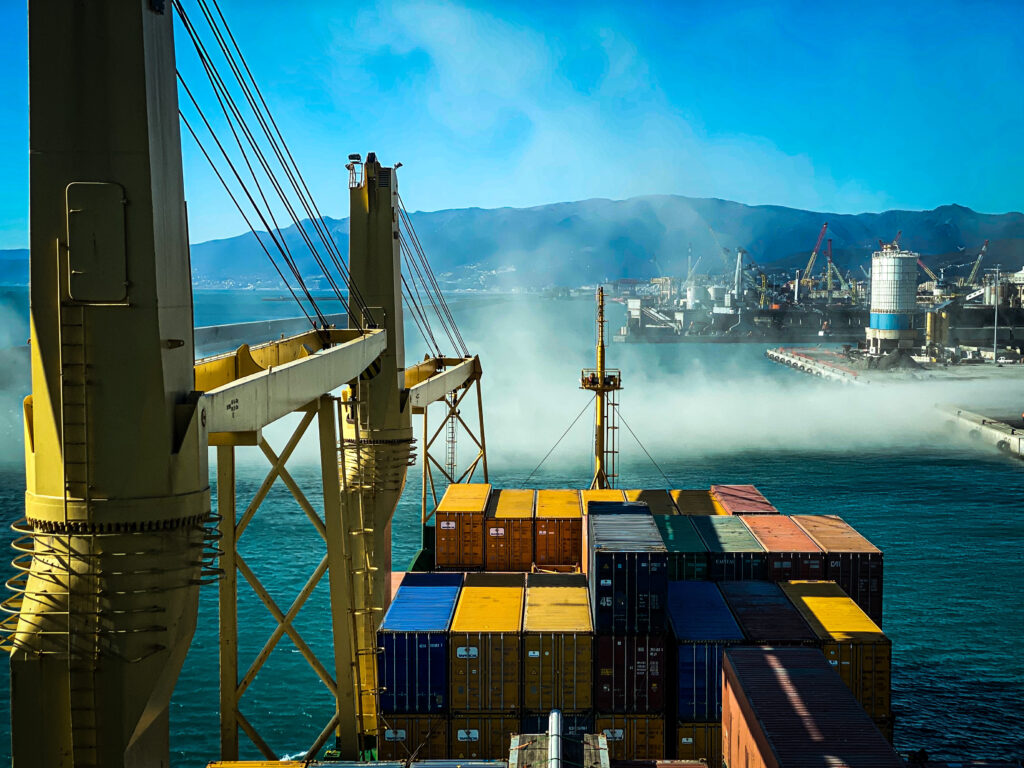Manoeuvring Experience Copy
Here follows a story by one of our pilots who’s a part of the STANDBYENGINE organisation:
It was a sunny afternoon, with a breeze that, in gusts, reached a maximum of 15 knots. I was onboard a Russian ship about 130 meters long. It had no bow thruster but two fixed pitch propellers. It was the classic situation where a tugboat would have been helpful to us, but at that moment, I saw no danger and didn’t insist too much. The Russian master was a big man in his sixties who proudly displayed numerous gold teeth that gleamed every time he opened his mouth.
The manoeuvre involved going through a stretch of the canal, turning 90 degrees counterclockwise and moving 300 meters backwards towards the final mooring position.
Everything proceeded regularly: the most delicate part of the manoeuvre, the turning with about 15 knots of the north wind, was over. I aligned the stern in the direction of a crane about 70 meters from the end of the dock. On its base sat, chatting quietly, the two mooring men who awaited our arrival.
I told the captain to stop the engine, to lose a bit of headway. After a few seconds, the master, visibly agitated, shouted that the engine would not stop, then ran away from the Bridge!
The ship was heading faster and faster towards the crane and the two mooring men. I told the chief mate to drop both anchors while I pressed the whistle button and radioed the moorers to escape. When the impact was a few tens of meters away, I held the starboard anchor to change the trajectory.
After fifteen seconds, I also grabbed the port anchor. The ship veered and slowed but not fast enough. Suddenly, a few meters from the crane, strong turbulence in the propeller area announced the departure of the engine Ahead.
We stopped dangerously close but far enough!
As soon as the situation was under control, we weighed the anchors.
After a few minutes, the master joined me on the Bridge. My initial reaction was anger, and I criticised him, but I saw a truly mortified man.
He explained that the company he was navigating for was in dire straits and that even the cost of a single tug would put them in serious difficulty. He also told me that he had a heart problem and ran away to get a pill he kept in the cabin. Still, I was speechless when he approached, giving me his hand and thanking me from the heart. He handed me 100 US dollars … Needless to say, I didn’t even take a cent, and we became excellent friends anyway.
We were very close to the quay in that circumstance, so “holding the starboard anchor to change the ship’s direction” would have produced uncertain results: I don’t know if we would have avoided the impact with the crane if the engine didn’t restart. But the fundamental point to understand is that the effectiveness in managing an emergency depends, above all, on three factors:
- Keep calm.
- Apply a strategy,
- Know what to do.
Experience is the factor that contributes the most to the three points described. An emergency is an extraordinary, unexpected event where the reaction must be immediate, and often you have to act in a way you are not used to.

